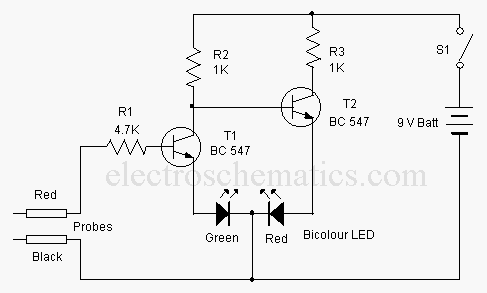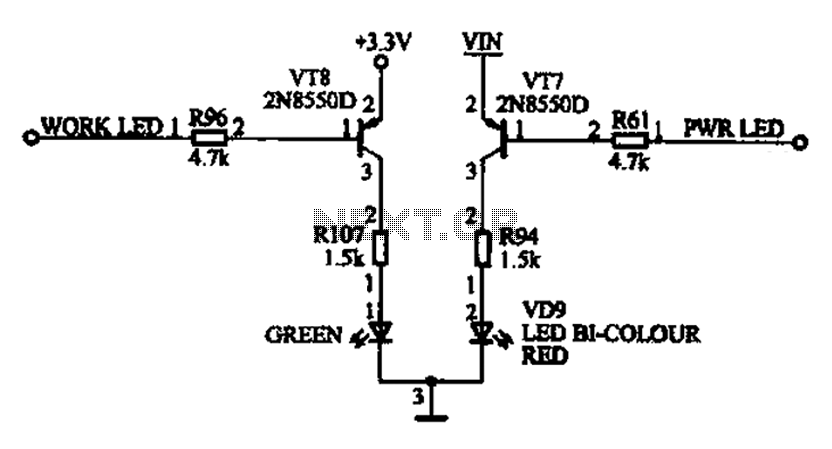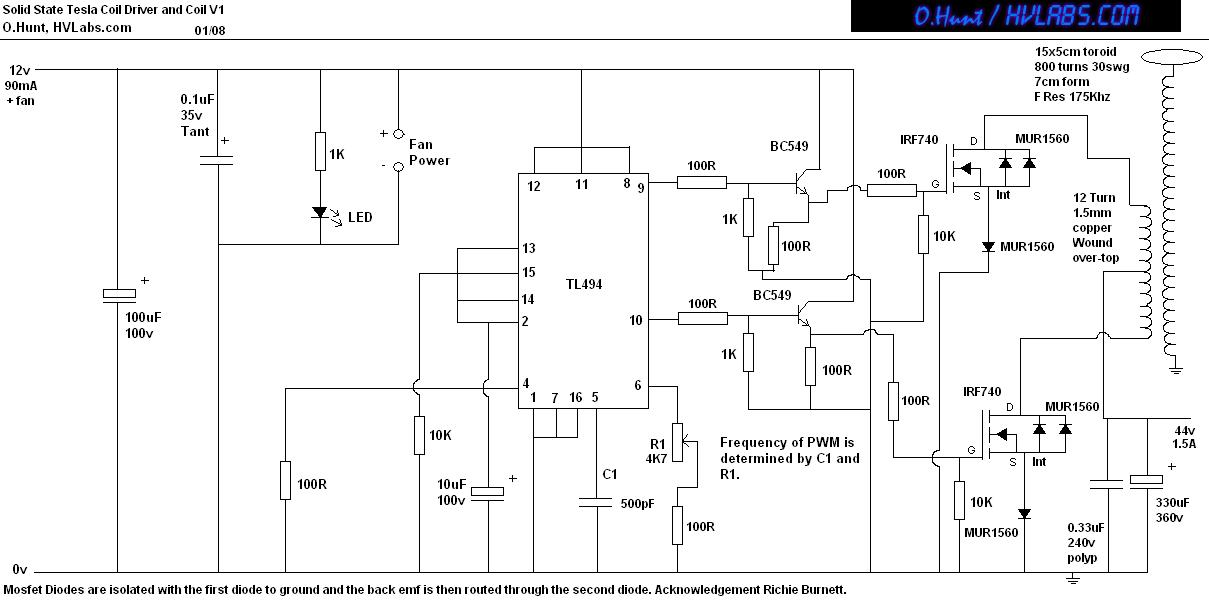
Logic State Indicator

This is a basic logic state indicator designed to test whether the output of a digital integrated circuit (IC) is in a logic high (1) or logic low (0). The bicolor LED illuminates green when the logic state is high.
The circuit for the logic state indicator primarily consists of a digital IC output, a bicolor LED, and a current-limiting resistor. The digital IC output provides a binary signal, which can be either high (logic 1) or low (logic 0).
When the output from the IC is high, the current flows through the circuit, energizing the bicolor LED and causing it to emit green light. This is achieved by connecting the anode of the green segment of the bicolor LED to the output pin of the digital IC. The cathode of the green segment is connected to ground through a resistor, which limits the current flowing through the LED to a safe level, preventing damage.
Conversely, when the output is low, the bicolor LED does not light up, indicating a logic state of 0. The circuit can be powered using a standard voltage supply compatible with the digital IC, typically ranging from 3.3V to 5V, depending on the specifications of the IC used.
This simple yet effective logic state indicator is useful for troubleshooting digital circuits, allowing engineers and technicians to quickly ascertain the output state of an IC without the need for complex test equipment. The use of a bicolor LED enhances visibility and provides immediate feedback on the logic state.Here is a simple logic state indicator to test whether the output of digital IC is in logic 1 or 0. The Bicolor LED lights Green when the logic state is 1.. 🔗 External reference
The circuit for the logic state indicator primarily consists of a digital IC output, a bicolor LED, and a current-limiting resistor. The digital IC output provides a binary signal, which can be either high (logic 1) or low (logic 0).
When the output from the IC is high, the current flows through the circuit, energizing the bicolor LED and causing it to emit green light. This is achieved by connecting the anode of the green segment of the bicolor LED to the output pin of the digital IC. The cathode of the green segment is connected to ground through a resistor, which limits the current flowing through the LED to a safe level, preventing damage.
Conversely, when the output is low, the bicolor LED does not light up, indicating a logic state of 0. The circuit can be powered using a standard voltage supply compatible with the digital IC, typically ranging from 3.3V to 5V, depending on the specifications of the IC used.
This simple yet effective logic state indicator is useful for troubleshooting digital circuits, allowing engineers and technicians to quickly ascertain the output state of an IC without the need for complex test equipment. The use of a bicolor LED enhances visibility and provides immediate feedback on the logic state.Here is a simple logic state indicator to test whether the output of digital IC is in logic 1 or 0. The Bicolor LED lights Green when the logic state is 1.. 🔗 External reference





